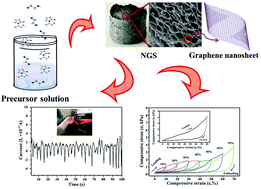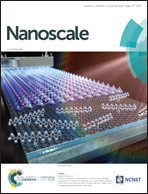Extremely elastic and conductive N-doped graphene sponge for monitoring human motions†
Abstract
Due to the extraordinary properties of great elasticity, ultralow density, and good electrical conduction, macroporous graphene bulk materials are the promising candidate as the sensing materials for flexible electronics. Although a large number of progresses have been made, the piezoresistive effect of graphene does not completely meet requirements for various applications yet. Herein, the nitrogen-doped graphene sponge (NGS) material with well-ordered and uniform macroscopic porous structure in long range has been developed by a simple and low-cost strategy by combining hydrothermal and thermal annealing processes. The resulting NGS possesses superior properties of a low density, large elasticity with 80% of the reversible compressibility and outstanding linear elastic region (up to 30%–40%), favorable structural stability, good electrical conductivity (1.4 S m−1), as well as the outstanding sensing performances of a fine sensitivity (1.33 kP−1), low detection limit (2% strain), excellent linear sensing range (nearly 20%), long term stability (3000 cycles), and fast response (72.4 ms). Based on these prominent performances of NGS, a new type of piezoresistive sensor is fabricated, which can successfully detect the human motions from subtle deformations, including the finger bending with the bending degree of approximately 30° and the tiny pulse perturbation of the wrist joint.



 Please wait while we load your content...
Please wait while we load your content...